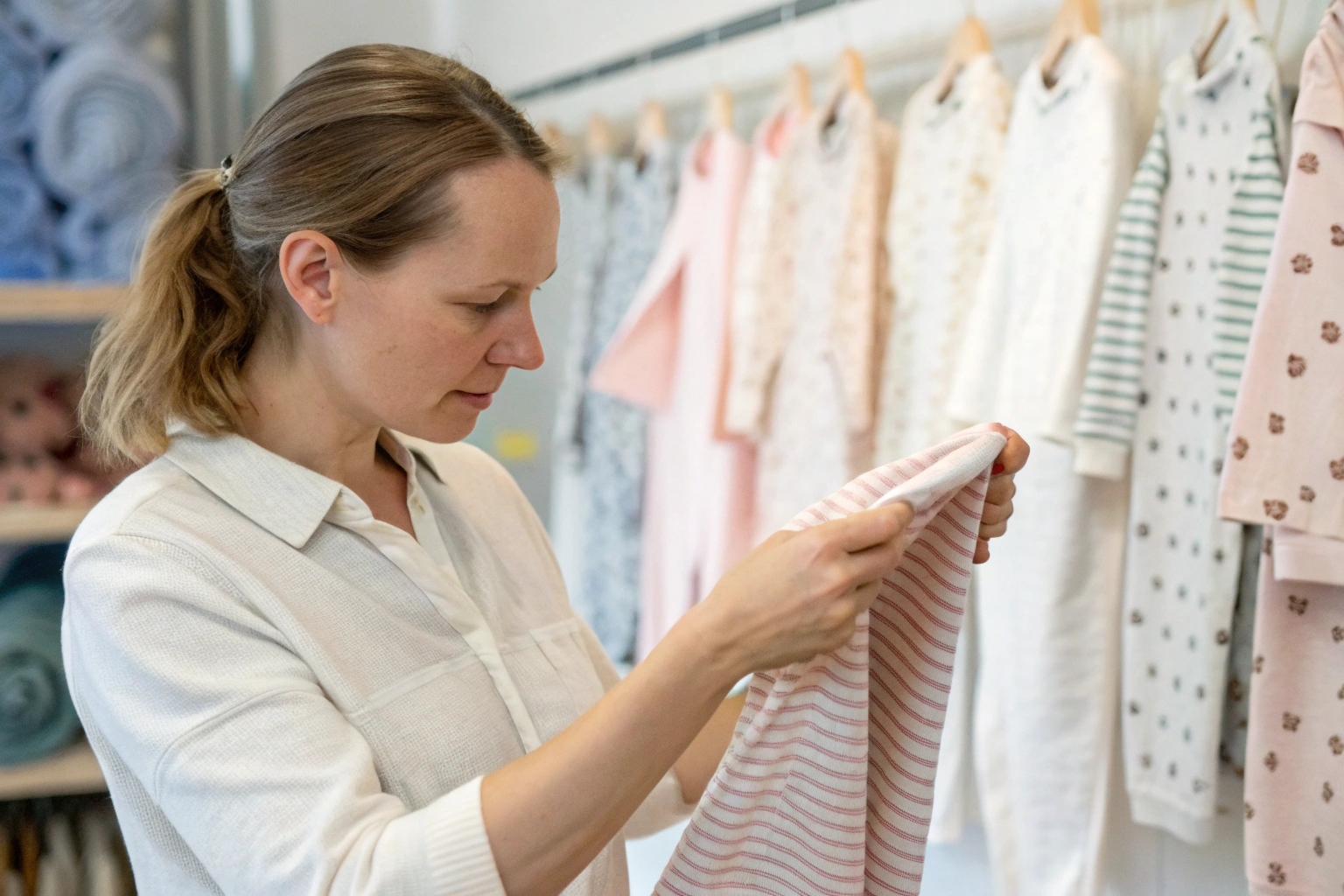Eco-conscious parents want more than just soft organic cotton—they want baby clothes that are safe, non-toxic, and ethically made. But can sustainability and strict safety truly go hand in hand?
Sustainable babywear can meet global safety standards by using certified organic or recycled fabrics, non-toxic dyes, and rigorous testing that guarantees both environmental and child health compliance.
Let’s see how brands can align green values with product safety without compromise.
What Certifications Ensure Both Sustainability and Safety?
It’s not enough to simply say a garment is “organic” or “eco-friendly.” True sustainability includes meeting tough chemical and ethical production standards.
Certifications like GOTS, OEKO-TEX® Standard 100, and GRS guarantee that babywear is both sustainably sourced and safe for infant skin.
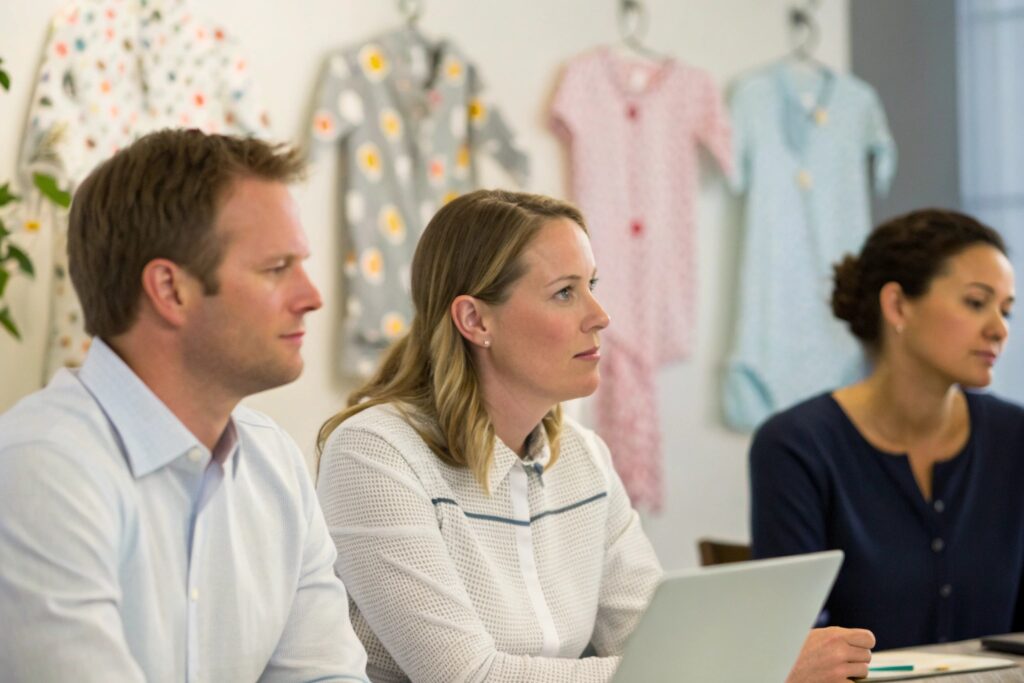
Essential dual-purpose certifications:
| Certification | What It Ensures |
|---|---|
| GOTS (Global Organic Textile Standard) | Organic farming + restricted chemical use |
| OEKO-TEX® Standard 100 | Free from harmful substances (finished garment testing) |
| GRS (Global Recycled Standard) | Verified recycled content + non-toxic processes |
| CPSIA (U.S.) | Confirms compliance with child product safety laws |
| REACH (EU) | Controls hazardous substances in textiles |
These certifications audit the entire supply chain—from field to fabric to finished product—ensuring true eco-safety, not just greenwashing.
At Fumao, we partner with GOTS and OEKO-TEX® certified mills to ensure our sustainable babywear lines meet both environmental and infant health expectations.
How Organic and Recycled Fabrics Are Tested for Compliance?
Not all “green” fabrics are automatically safe. Testing verifies that even organic or recycled materials meet strict chemical and safety regulations.
Organic and recycled fabrics must be tested for residual pesticides, formaldehyde, heavy metals, and colorfastness to comply with safety standards like CPSIA and REACH.
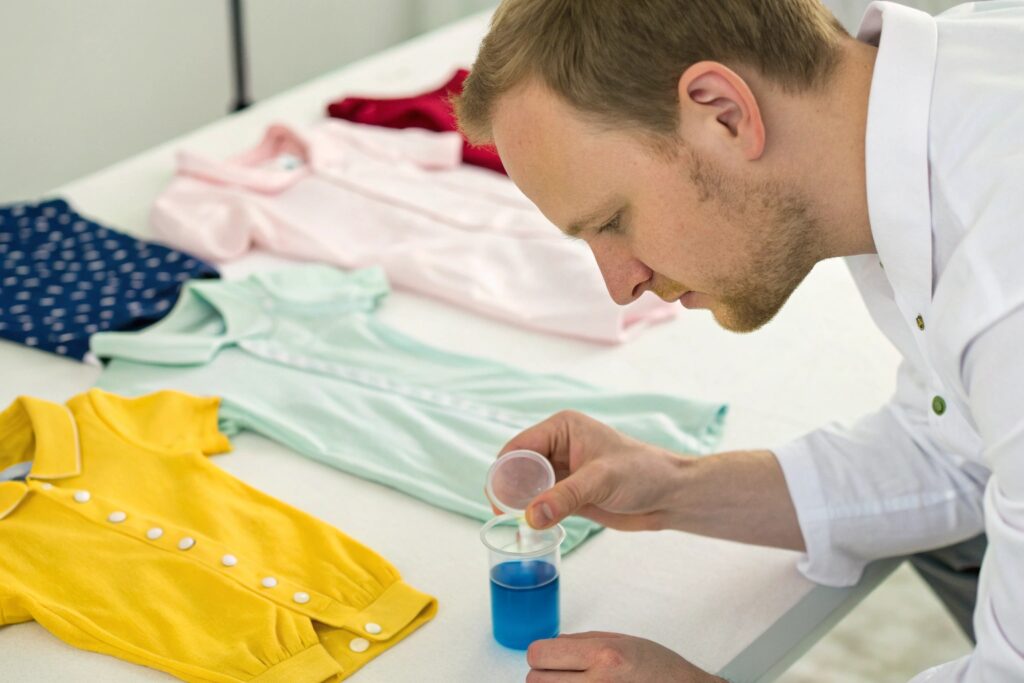
Key tests for compliant green fabrics:
| Test Type | What It Checks |
|---|---|
| Pesticide residue analysis | Ensures organic cotton isn’t contaminated |
| Formaldehyde content | Must be extremely low for infant garments |
| Heavy metal testing | Verifies safe dye and print ingredients |
| Colorfastness to saliva/sweat | Especially for babywear |
| Shrinkage and flammability tests | Essential for global market entry |
Even recycled fibers like RPET (recycled polyester) are lab-tested to verify they don’t release toxins or unsafe byproducts during wear.
Suppliers must provide third-party test reports from accredited labs like SGS, Intertek, or TÜV SÜD before shipping goods internationally.
Why Non-Toxic Dyes and Finishes Matter in Eco Babywear?
Fabrics aren’t the only concern—dyes, prints, and finishes can introduce hidden hazards if not carefully managed.
Using non-toxic, heavy-metal-free dyes and safe finishing processes is critical in sustainable babywear to avoid skin irritation, chemical exposure, and regulatory violations.
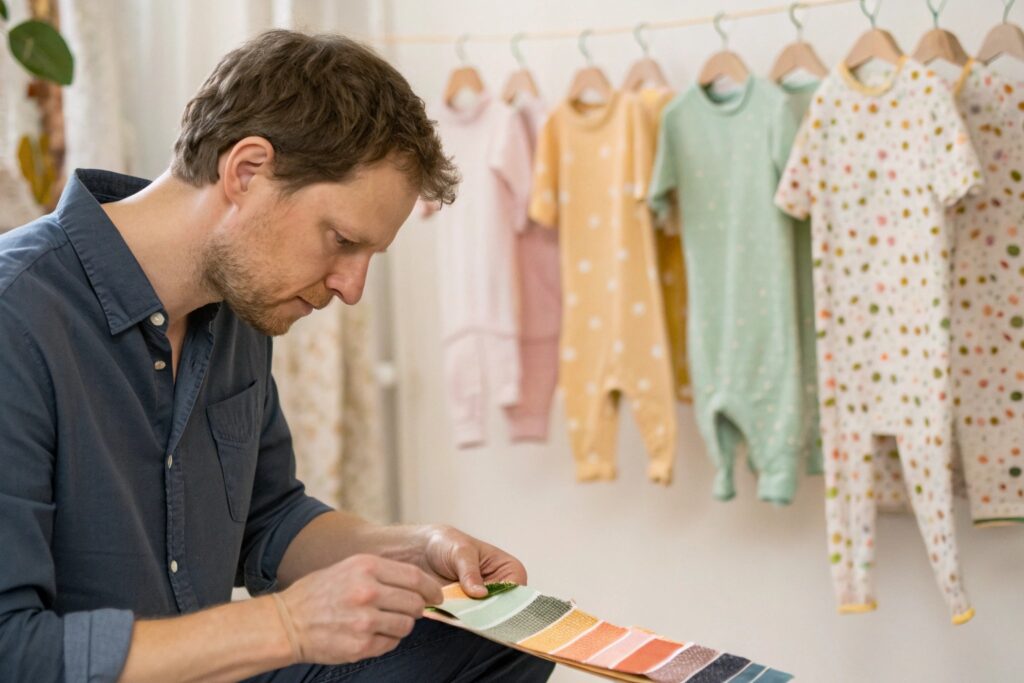
How safe dyeing and finishing works:
| Non-Toxic Practice | Benefit for Babies and Planet |
|---|---|
| Water-based, low-impact dyes | Reduces skin allergies and environmental pollution |
| Heavy-metal-free pigments | Eliminates risks from lead, cadmium, chromium |
| No formaldehyde anti-wrinkle finishes | Safer breathing and skin contact |
| Natural enzyme pre-treatment | Softens fibers without harsh chemicals |
| Azo-free certification | Avoids banned carcinogenic dyes |
Eco-friendly dyes also allow better recycling at end-of-life, supporting a more circular fashion system.
Today’s top organic babywear brands clearly label products with statements like:
“Dyed with low-impact, azo-free, heavy-metal-free dyes—OEKO-TEX® certified.”
Tips for Balancing Green Materials with Global Safety Standards?
Making sustainable babywear that’s safe requires planning from the very first sourcing decision.
To balance sustainability and safety, brands should select certified materials, work with eco-compliant mills, run independent lab tests, and stay updated on evolving regulations.
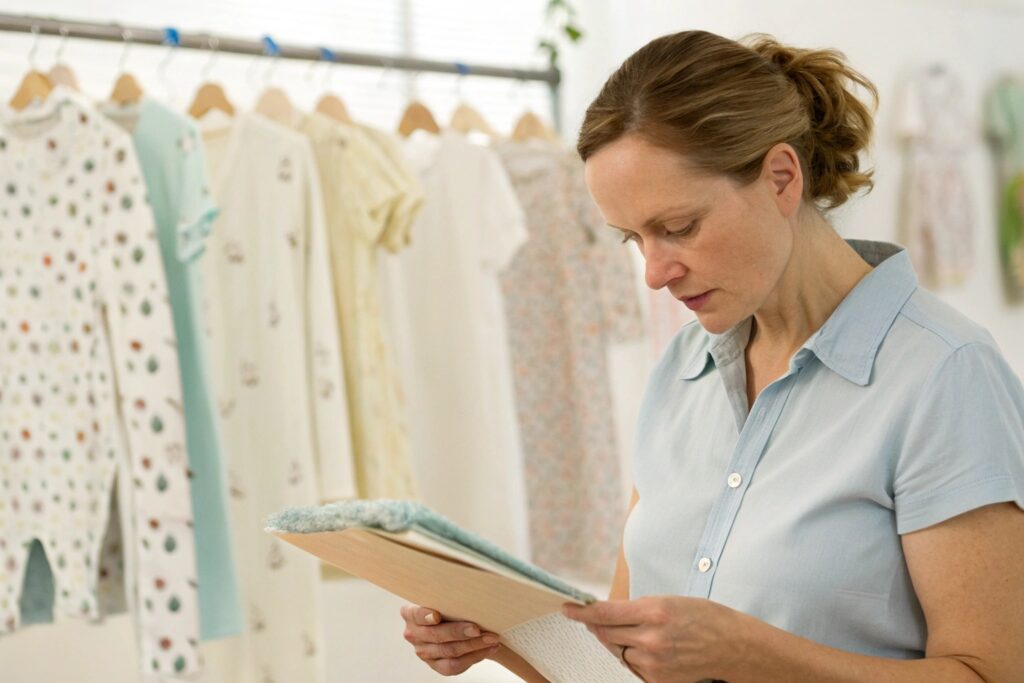
Practical steps for brands:
| Step | Why It Helps |
|---|---|
| Source pre-certified fabrics | Reduces risk and compliance workload |
| Set chemical limits stricter than CPSIA/REACH | Future-proofs products |
| Use experienced eco-dye houses | Ensures low-toxicity color development |
| Test all trims (buttons, snaps, prints) | Trims must match fabric safety too |
| Stay updated on new chemical bans | Compliance rules shift regularly |
For example, even an organic cotton romper must have safe snap closures, certified thread, and non-toxic screen prints to be fully compliant.
At Fumao, our eco babywear collections follow a “zero tolerance” chemical policy, tested twice: once at fabric stage, once at finished product stage.
Conclusion
Sustainability and safety are not competing goals—they go hand in hand in modern babywear. By choosing certified green materials, testing rigorously, and committing to non-toxic production processes, brands can deliver clothes that are kind to babies and the planet—and win the lasting trust of eco-conscious parents worldwide.

